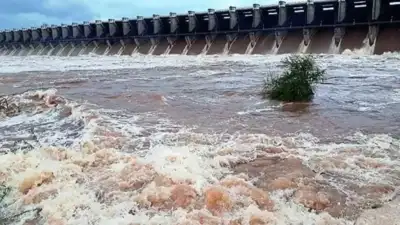Experts call for better dam storage to avert monsoon floods in Karnataka | Bengaluru News

BENGALURU: With India Meteorological Department (IMD) forecasting an above-normal monsoon this year, irrigation experts have urged the govt to adopt a scientific approach to reservoir water management to avert artificial floods.
The call for caution follows flash floods in recent years despite average rainfall, which experts attribute to poor planning in storing and releasing water.
IMD predicted that rainfall across the country will be 105% of the long-period average (LPA), with a model error margin of plus or minus 5%. Northern Karnataka, in particular, is expected to receive heavy rain, raising concerns about a repeat of recent disasters.
Several areas in north Karnataka falling in the Krishna river basin – which also covers Tungabhadra basin – were affected by floods in 2019, 2021, and 2024. The Cauvery basin experienced a flood situation in 2018 when farmlands in Kodagu and adjoining areas were submerged.
Significantly, many of these flood events occurred in July and Aug, even when rainfall was close to LPA.
Experts say the deluge was triggered by the sudden release of water from brimming reservoirs that had been filled quickly following a dry start to the monsoon, which typically arrives in early June.
“The vagaries of monsoon lead to a tricky situation for water storage management at dams. In the years when there is delay in the onset of monsoon, the authorities tend to preserve water out of fear of the impending drought situation and they would be forced to release excess water when it starts raining heavily around July-Aug. This is the reason why we are advising cautious approach. Water should be released as and when there is inflow and the storage should never be allowed to go beyond 70% of the capacity of dams,” said Dr G S Srinivas Reddy, former director of Karnataka State Natural Disaster Monitoring Centre.
Experts warn the pattern of holding water until reservoirs are nearly full, only to release it en masse, must change in light of the favourable monsoon forecast. “Storage decisions must be based on scientific data and real-time forecasts rather than outdated assumptions. Releasing water in a phased manner can help both farmers and flood-prone areas,” a senior irrigation official said.
The state’s water resources department said it is committed to strictly adhering to the rule curve and improving coordination with neighbouring states. Officials said mismanagement of upstream releases, such as from the Koyna dam in Maharashtra, contributed to floods in the Krishna basin in 2019.
“Lessons have been learnt from the experience of 2019 and onwards. A coordination committee comprising the additional chief secretaries of Karnataka and Maharashtra has been set up. And there is a WhatsApp group of officials from all riparian states of the both Krishna basin and there will be a timely alert before release of water. With this, the disastrous situation witnessed in the recent years will not be repeated,” said Krishnamurthy B Kulkarni, secretary, water resources department.
The govt has also commissioned a survey to remove encroachments along riverbanks, which are seen as another major factor behind flash floods.















